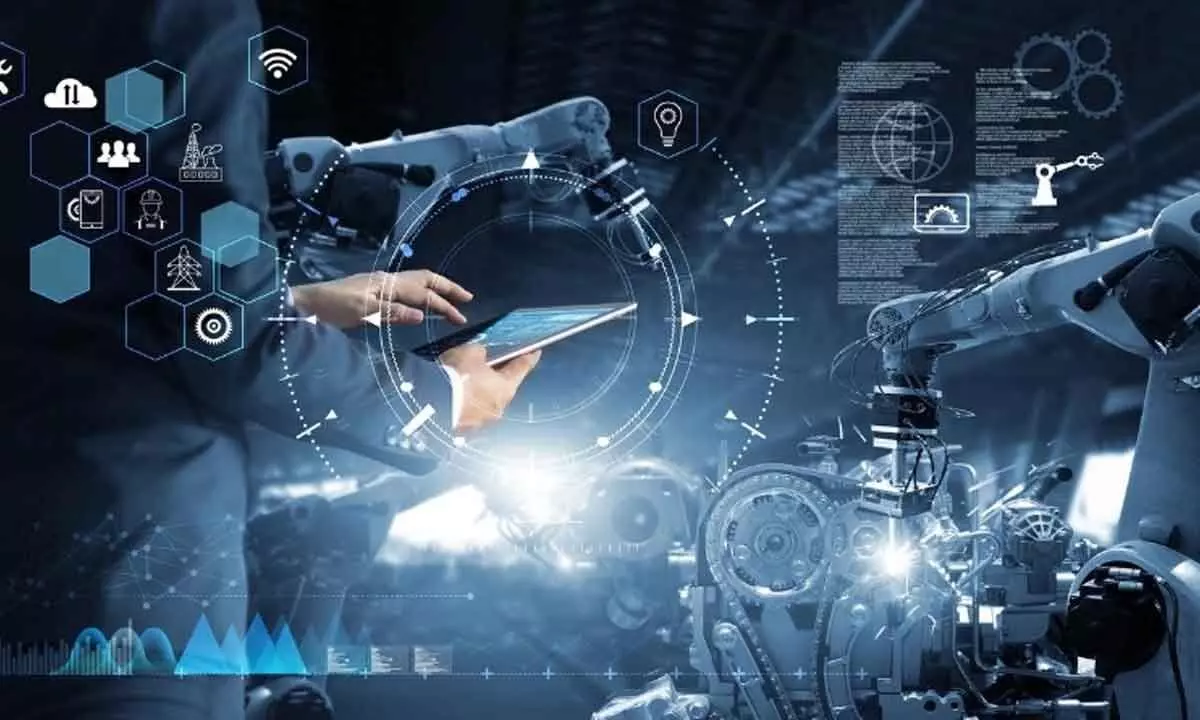Global Industry 4.0 market set to reach $219.8 bn by 2026
Production systems stand to become as much as 35% faster and 30% more efficient through Industry 4.0 capabilities
image for illustrative purpose

Industry 4.0 (i4.0), the fourth industrial revolution, defines the new age of intelligent factory and smart manufacturing processes. Also referred to as Industrie 4.0, because of being first conceived and implemented by Germany, i4.0 involves the integration of automation techniques and connected objects for revolutionizing the factory floor.
The digitally enabled factory of today looks very different from the leading factory of ten years ago - while manufacturers in 2025 will look very different still. This makes digitalization a requirement and smart manufacturing an evolving to do list. Yet the companies that get it right can harvest the huge – scalable – benefits across the entire manufacturing value chain such as: Reduced material losses; improving customer service; better delivery lead times; higher employee satisfaction and lower environmental impact i4.0 functions in the form of a subset of the Internet of Things (IoT) and spans all facets of industrial development. In an i4.0-enabled manufacturing environment, different manufacturing processes are inter-connected through industrial protocols to generate intelligent data. The dynamic engineering and business processes of such a manufacturing environment enable end-process changes during production, thereby responding flexibly in the event of suppliers failing to fulfill the supply orders.
The global market for Industry 4.0 is projected to reach a revised size of $219.8 billion by 2026, growing at a CAGR of 16.5 per cent over the analysis period.
Combining the digital, physical and virtual worlds creates unparalleled opportunities for growth and productivity while reframing the competitive landscape with smart products and new service models. Production systems stand to become as much as 35 per cent faster and 30 per cent more efficient through Industry 4.0 capabilities, according to von Scheel, enabling 'mass customization' - the ability to create tailored products at high speed and on a scale never before possible.
In other words, the benefits of Industry 4.0 are multidirectional, extending out to the end customer as well as deeply into manufacturing operations and across the value chain.
We are living at the beginning of a new technological revolution around Industry 4.0 technologies such as artificial intelligence (AI), robotics, and the Internet of Things (IoT).
Industry 4.0 refers to the 'smart' and connected production systems designed to sense, predict, and interact with the physical world, so as to make decisions that support production in real-time.
Developing countries need to diversify their production towards more technologically advanced sectors.
Just like rapid technological change can accelerate progress, it also risks leaving many people behind. Historically, every wave of technological progress since the Industrial Revolution has been associated with sharper inequalities between countries. Before the 1800s, there was little income disparity across countries; today the average gap in per capita income between developed and developing countries is over $40,000.
Technological change affects inequality through jobs, wages and profits. In the case of Industry 4.0, new technology mainly increases productivity. As companies become more productive, they are also more competitive and more likely to hire more higher-skilled workers in better jobs. Countries in which firms adopt Industry 4.0 could expect a higher increase in productivity and competitiveness, and wages.
Industry 4.0 in manufacturing can bring huge gains in productivity, but most firms in developing countries are way far from using Industry 4.0. Developing countries would not be able to broadly deploy Industry 4.0 if they have weak manufacturing. They need to diversify their production towards more technologically advanced sectors.
The state has a crucial role in promoting potential sectors, strengthening innovation systems, building coherence between STI (science, technology and information) policies and other social and economic ones, and ensuring a participatory approach in this process. Governments should also promote affordable, high-quality access to the Internet and build digital skills in the business sector, including SMEs. They should also create the conditions required to deploy Industry 4.0 in manufacturing.
These include the development of national strategies directing the coordinated deployment of Industry 4.0, the creation of a multi-stakeholder mechanism institutionalising a participatory approach to foster Industry 4.0, and building international cooperation to accelerate the transference of technology and know-how.
To foster the adoption of Industry 4.0, governments should raise the awareness of the private sector, promote investments and facilitate financing for the deployment of Industry 4.0. Policy-makers in developing countries should also be attuned to changes in trade patterns and global value chains and how they would affect their workforce. Workers who cannot be trained or retrained and lose their jobs should rely on stronger mechanisms of social protection.

